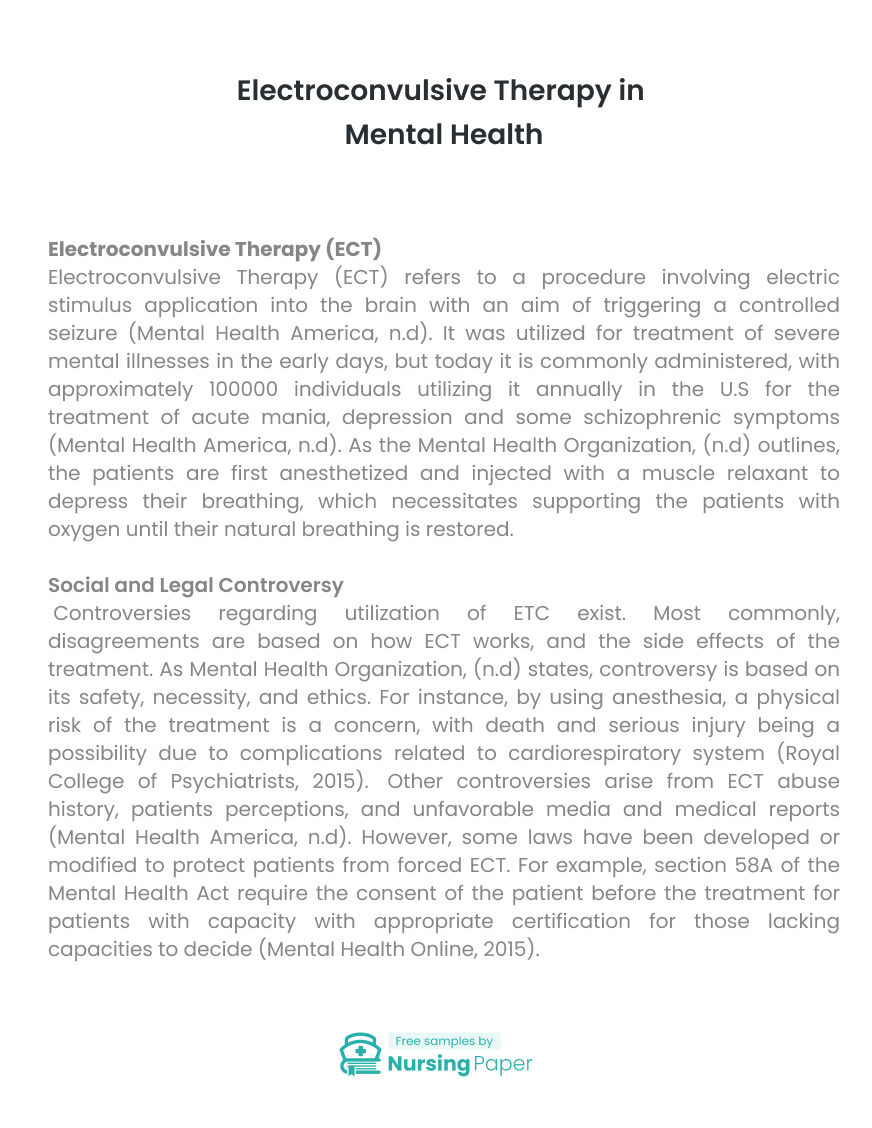1. Bailine, S., Fink, M., Knapp, R., Peptrides, G., Husain, M., Rasmussen, K., et al. (2010). Electroconvulsive therapy is equally effective in unipolar and bipolar depression. Acta Psychiatr Scand, 121(6): 431-436.
2. Khalid, N., Atkins, M., Tredget, J., Giles, M., Champney-Smith, k., & G, K. (2008). The effectiveness of electroconvulsive therapy in treatment-resistant depression: A naturalistic study. Journal of ECT, 24(2): 141-146.
3. MacQueen, G., Parkin, C., Marriott, M., Begin, H., & Hasey, G. (2007). The long-term impact of treatment with electroconvulsive therapy on discrete memory systems in patients with bipolar disorder. Journal of Psychiatry & Neuroscience, 32(4):241-249.
4. Medda, P., Perugi, G., Zanello, S., Ciuffa, M., & Cassano, G. (2009). Response to ECT in bipolar I, bipolar II and unipolar depression J Affect Disord , 118(1-3): 66-69.
5. Mental Health America, M. (n.d). Electroconvulsive Therapy (ECT). Retrieved from http://www.mentalhealthamerica.net/ect
6. Mental Health Online. (2015). Additional safeguards for ECT introduced in new s58A. Retrieved from http://www.mentalhealthlaw.co.uk/Additional_safeguards_for_ECT_introduced_in_new_s58A
7. Mental Health Organization. (n.d). Electroconvulsive Therapy (ECT). Retrieved 17 April from https://www.mentalhealth.org.uk/a-to-z/e/electroconvulsive-therapy-ect
8. Ministry of Health. (2004). Use of Electroconvulsive Therapy (ECT) in New Zealand: A Review of Efficacy, Safety, and Regulatory Controls. New Zealand.
9. Missouri General Assembly. (2016). Missouri Revised Statutes: Chapter 630. Retrieved 17 April 2017 from http://www.moga.mo.gov/mostatutes/stathtml/63000001301.html
10. Royal College of Psychiatrists. (2015). ECT. Retrieved 17 April 2017 from http://www.rcpsych.ac.uk/mentalhealthinformation/therapies/electroconvulsivetherapy,ect.aspx?theme=mobile
11. Rose, D., Fleischmann, P., & Wykes, T. (2003). Patients’ Perceptions on Electroconvulsive Therapy: Systematic Review. BMJ, 326:1363.

The download will start shortly.






 Subject:
Subject:
 Number of pages: 4
Number of pages: 4